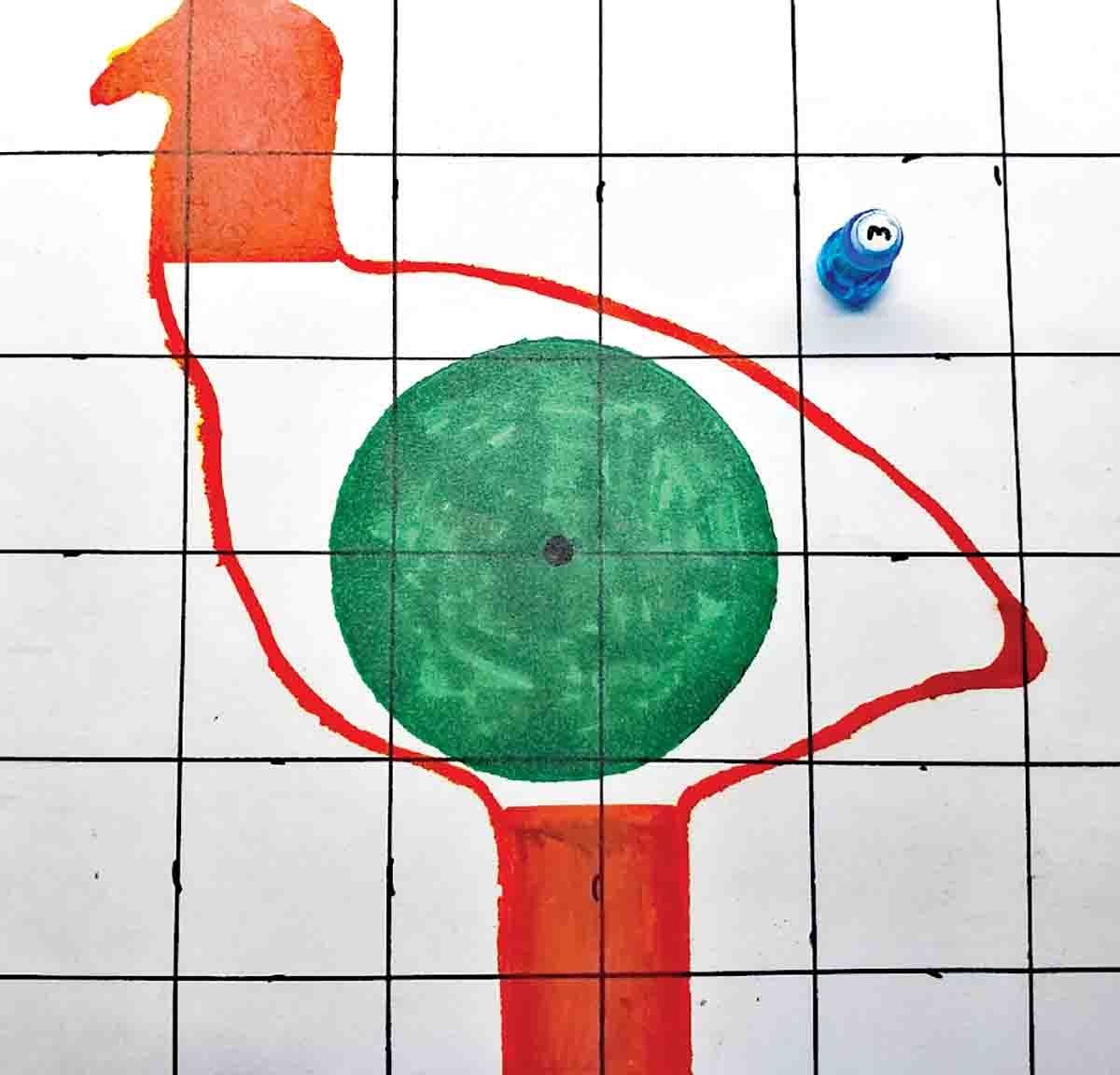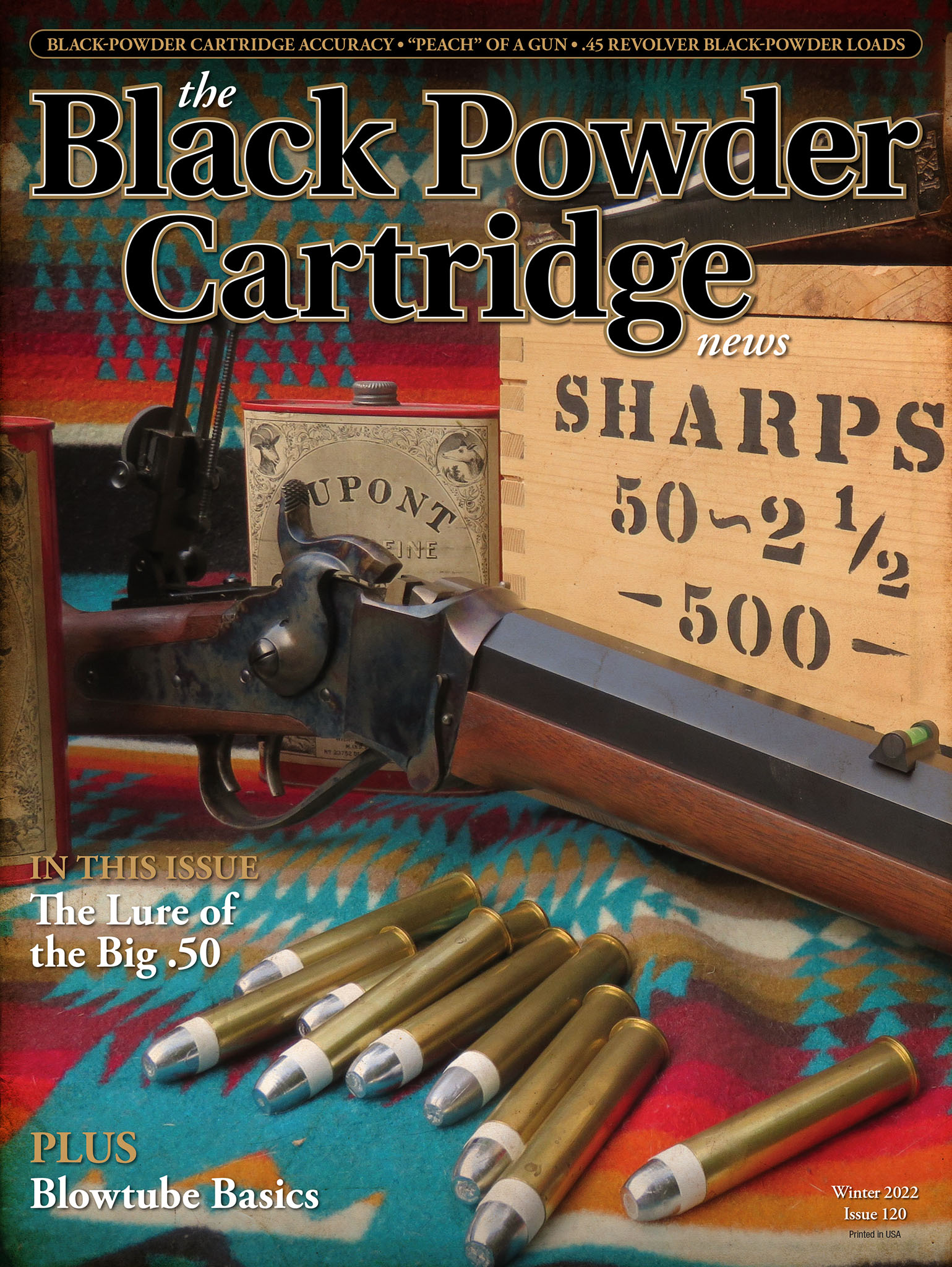Letters from Readers
N.S. Brockway / Thoughts on Silhouette Technique
column By: Staff | December, 22
.jpg)
Thank you for your development and presentation of the article on Norman Brockway. You, as well as I, share the understanding of the importance of passing on this history, as it enhances our appreciation of the development of the precision rifle. Your photograph on page 14 (Black Powder Cartridge News - Fall 2022) of Mr. Brockway, from “Polecat” Porter’s notebook bears this note (in Porter’s hand):
“This old gentleman passed away shortly after this article was written. 1936. A real gentleman and rifleman of the old school. We mourn his passing.”
Also, for those who haven’t seen it, Brockway’s rifling bench, some tools and targets are on permanent exhibit at the Rand House during the National Muzzle Loading Rifle Matches put on by the National Muzzle Loading Rifle Association at Friendship, Indiana.
– Mark Barnhill
Thoughts on Silhouette Technique

As I was coming home from a silhouette match at Tappan Hill Gun Club in Glasco, Kansas, I really started thinking about some rules to shoot by, more so from the shooters prospective, as I ran into trouble on my last relay. Some of it may sound simple but I’d appreciate feedback from fellow shooters who may or may not use a similar method.
Many of the directions below are basic to many competitors for spotting and shooting. However, there are times when conditions can be highly variable. Having said that, when conditions get very busy or even out of control, some rules might be advisable in order to remain on task.
In silhouette, especially 22BPCR, time is limited; therefore, specific spotting/shooting rules may be beneficial. I’ve seen over four conditions changes, many during the same time, in one relay. Rules may be beneficial to keep from confusing hold-offs and chasing sight changes, not to mention spotter/shooter communication confusion.
Knowns:
Determine your dominant wind and shoot, as possible, only during your dominant wind. Pre-adjust sights before the relay to estimate the conditions.
Use a minimum of three sighter shots and work to the center of the animal. No holding off of shots during sight-in.
You must break good center shots when sighting in, and call your shots. Be honest with the spotter as to whether they are good breaks or not.
Before going for score, you are centered in the animal during the dominant wind.
Spotters must keep conversation to a minimum and only give sight corrections to the center of the animal. Use the simple phrases “Send it” or “Hold it” to direct when to shoot during a dominant wind.
Going for Score:
As is possible, break only center shots, eyes open and call your shots (mentally).
As necessary, move holds only within the green MOA circle, moving the hold in to the mirage. Do not move sights if the hits are in the green or white areas. Move the hold opposite of the hits landing near the red areas, but stay within the green zone.
Only adjust the sights if the dominant wind is lost and hits run into the red areas of the animal or result in a miss.
As possible, always wait for the dominant wind to return.
If the hits are landing in green and white areas, leave the sights alone and shoot. If there are rapid and frequent changes, speed up the shooting in the dominant wind as possible.
As the shooter you own the shot, regardless of a hit or miss. The spotter is only there to help. It’s your shot and you have the final condition call.
I would welcome any thoughts or criticisms on this method of shooting. Hopefully, this will help some shooters, especially beginners, to formulate a strategy for shooting in their next silhouette match.
Kirksville, Missouri


